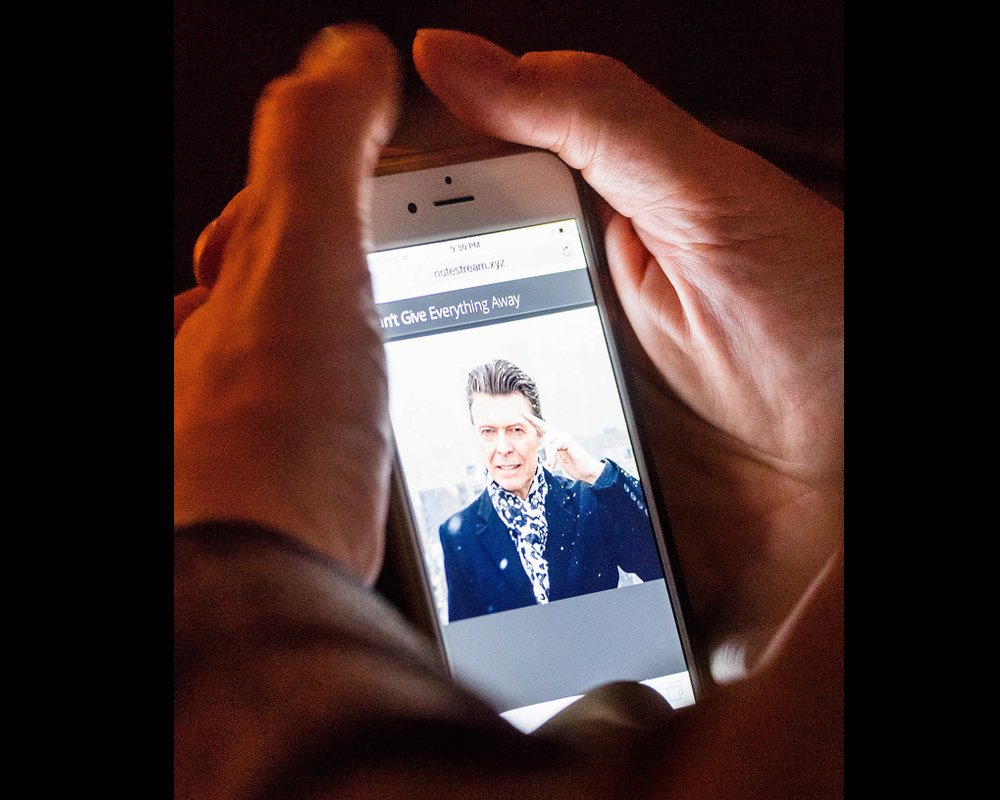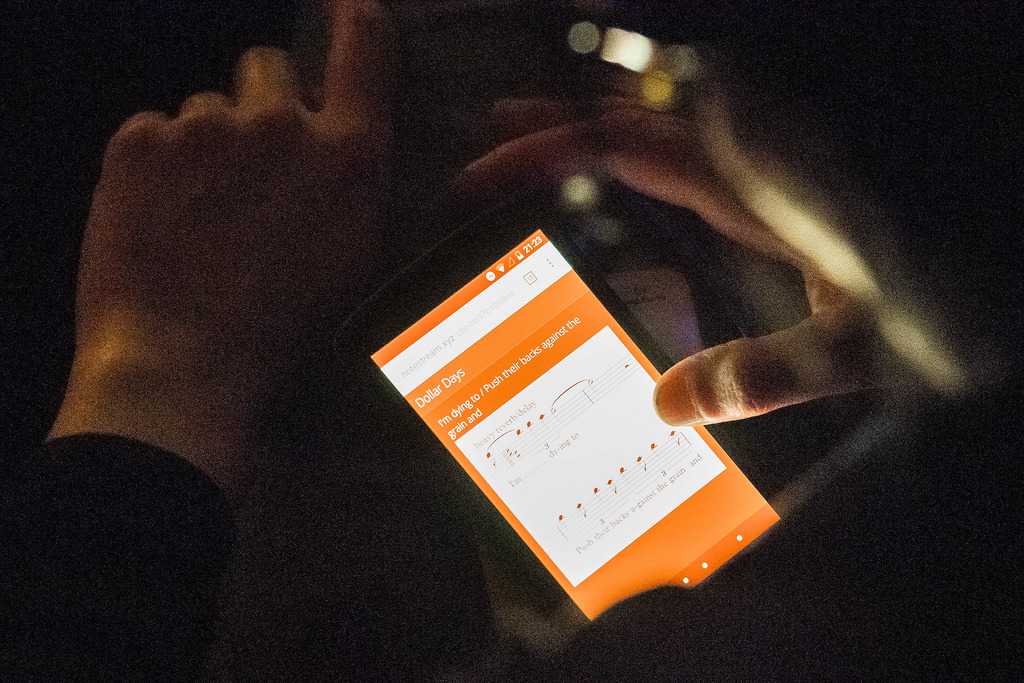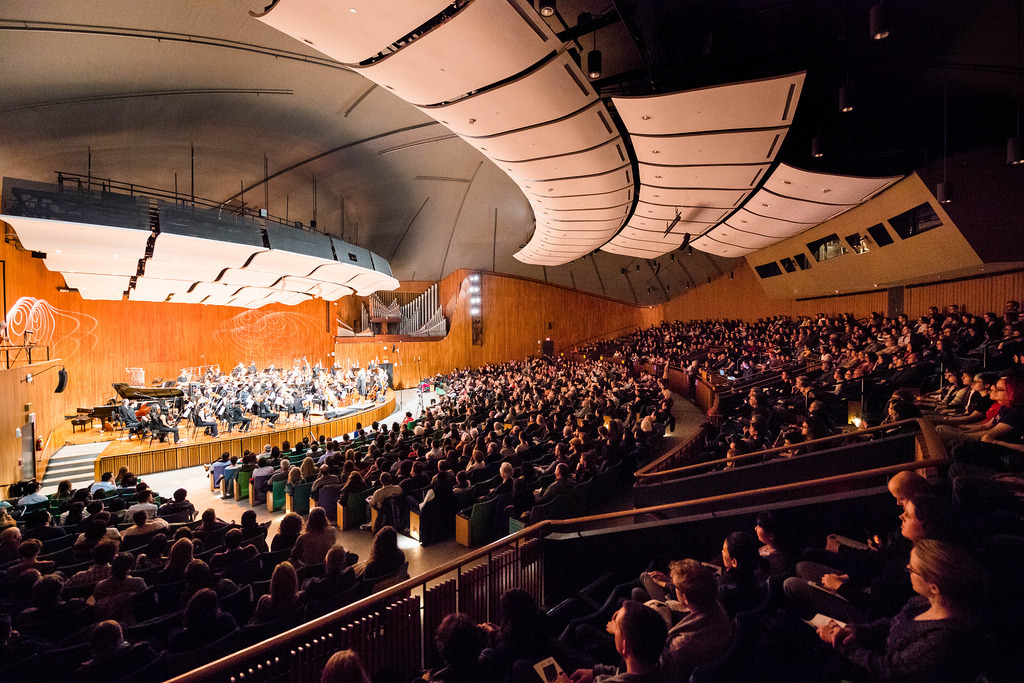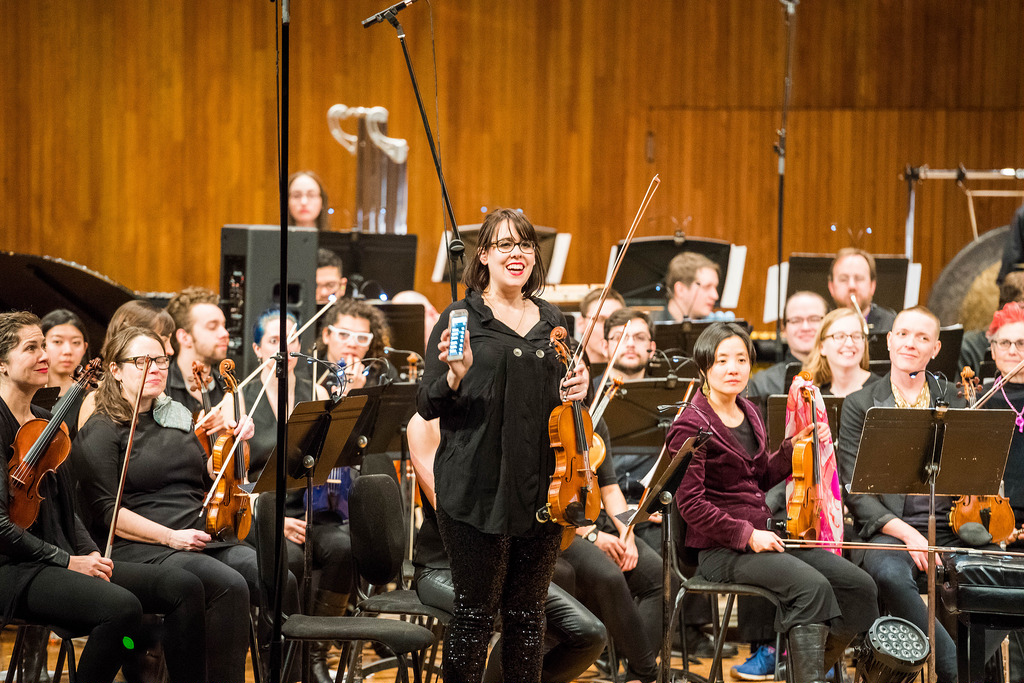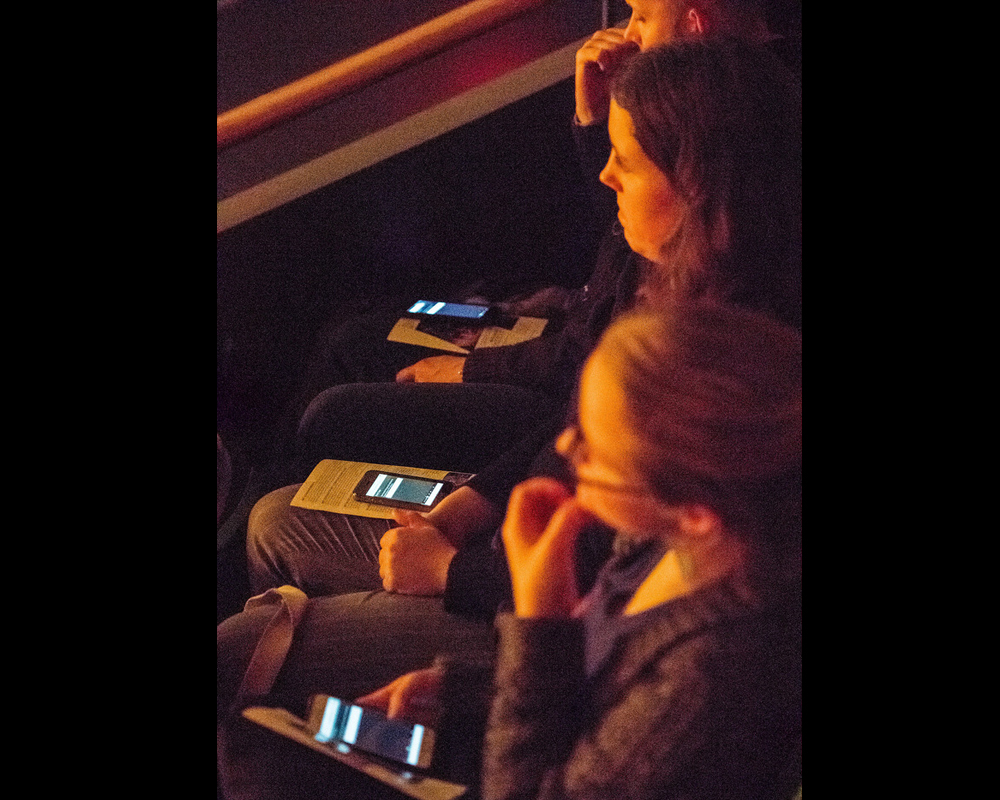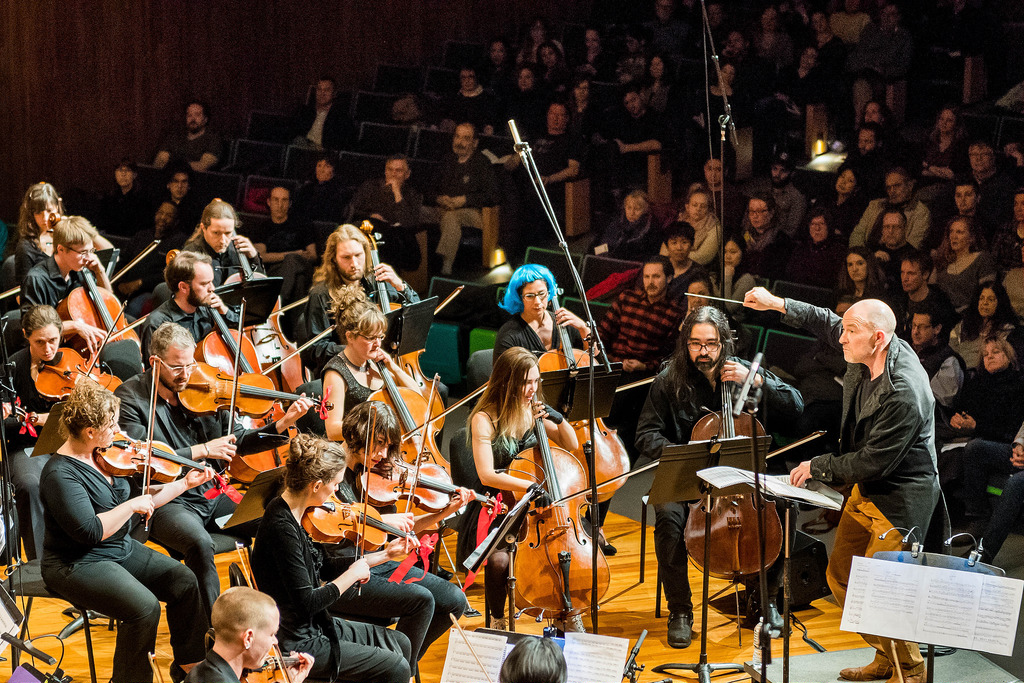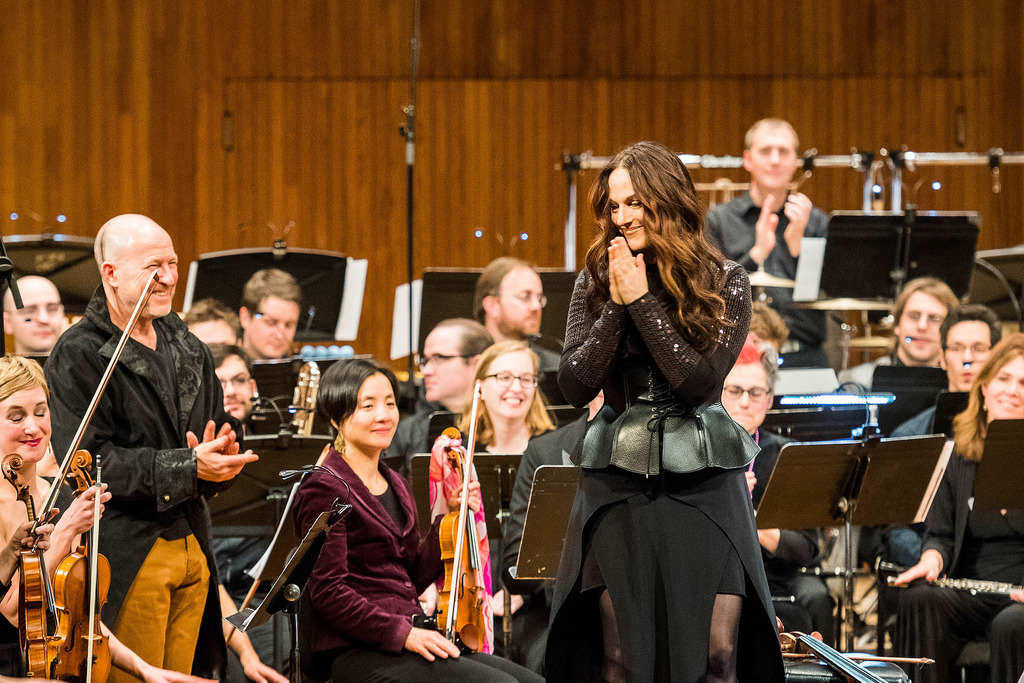When I was an art student in New York in 1999, David Bowie visited our school and offered to host images of our work on BowieNet, an ISP he had launched the previous year. Glimpsing Bowie was enough to blow our minds, but his proposition also had us buzzing. To put in perspective how vanguard BowieNet was, this venture predated a search engine called Google by three days. Bowie stated on his home page, “I welcome all you web travellers to the first community driven Internet site that focuses on music, film, literature, painting and more.”
Celebrated as a revolutionary in music and visual culture, Bowie should also be remembered as a web pioneer. He embraced technology at every turn—from BowieWorld’s 3D chat environment to 360-degree interactive webcasts to crowdsourcing a “cyber-song” (years before crowdsourcing was even a thing). So it was fitting that Evan Ziporyn’s orchestral version of Bowie’s Blackstar, a collaboration with acclaimed cellist Maya Beiser and the Ambient Orchestra, which premiered in Kresge Auditorium on March 3, 2017, had flashes of innovation beyond the performance onstage.
Eran Egozy, Professor of the Practice in Music Technology at MIT and co-founder of Harmonix Music Systems, known for the Guitar Hero series of video games, created ConcertCue (formerly NoteStream), a live program note web-app that was featured in the Blackstar concert. NoteStream upends the printed program, replacing it with a digital interactive format designed to work on smartphones and to deliver content to listeners in real time.
At the Blackstar concert, ConcertCue provided Beiser’s audience with the musical score, notes about Ziporyn’s arrangements and commentary about Bowie’s lyrics in an image-rich display. Egozy says, “Because the information is perfectly synchronized to the performance, we help the listener hear better. Simple cues like ‘listen to the tempo slow down,’ or ‘the recapitulation is now played by the French Horns,’ allows listeners, especially those new to the musical work, to understand and appreciate the concert performance as never before possible.”
Egozy worked with Lauren Flood, Mellon Post-Doctoral Fellow in Music & Theater Arts, and Nathaniel Gutierrez, MIT senior in Course 6.2, to give the concert program this digital makeover. Flood helped author the content and design the visual elements. Egozy says, “We have already learned a lot about authoring content for this experience. There is a strong temptation to add more and more information. But the key is scaling back and giving the users space to look away from their phones and be immersed in the live performance.” Flood, in consultation with Ziporyn, sought balance; she interspersed lyric bursts and composer’s notes with moments of rest—a subtle cue for users to shift focus from their screens to the stage.
Gutierrez, who won a 2017 Wiesner Student Art Award for his work on ConcertCue, focused on the engineering demands (the server must be robust to withstand 1,000 simultaneous users), the design requirements (how to present information that is useful but not distracting) and aesthetic concerns (how to achieve the right “feel” in the given context). Gutierrez was also responsible for the actual synchronization of ConcertCue during the concert. He functioned both as programmer and Score reader (to sync the content delivery system with the notes played). Eventually, the synchronization will be automated.
Egozy and Gutierrez have been working on this project for almost a year, and have used it in two concerts to date. (It was used in the December 2, 2016 MIT Wind Ensemble concert, conducted by Fred Harris, before being used for the Blackstar concert.) ConcertCue will soon be deployed by the Boston Symphony Orchestra at an upcoming concert. Asked whether users will embrace this enhanced digital program, Egozy says, “I’m hopeful. If you’re sitting in the audience listening to a piece you’ve never heard before, you may have no context and not know what to listen for. I go to a lot of concerts and see people flipping through the program notes while the piece is being played. Program notes can be very dense, and trying to read them during the performance may actually take you out of the moment.”
Moreover, if the thought of the audience using cell phones during a performance gives some pause, they should consider how concert programs have evolved and adapted to changing technologies over the centuries. Based on the earlier playbill and printed opera libretto tradition, concert programs became a standard feature by the 18th century. From the late 1870s, programs incorporated images created with daring new printing techniques, like chromolithography. With the invention of photography, images of performers (or advertisements) crept into the program. There was even an attempt to create a multi-sensory program impregnated with perfume in the 1860s—thanks to the perfumery firm and program sponsor Eugene Rimmel. The performance environment changed too, as candles gave way to incandescent lights, now LEDs.
If widely adopted, ConcertCue may introduce the faint glow of smartphones to the concert hall; but take heart, whatever initial disquiet may be caused by reimagining the familiar printed format, breaking the spell of complacency among concertgoers generally proves to be a good thing. What’s more, for Bowie, status quo would never do.
The Terry and Rick Stone Concert featured a startling new version of the complete Blackstar, David Bowie’s last album, by CAST Faculty Director Evan Ziporyn & cellist Maya Beiser. Beiser, CAST’s Mellon Distinguished Visiting Artist, performed with the 60 piece Ambient Orchestra, conducted by Ziporyn, as part of the MIT Sounding series.

